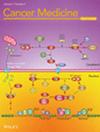Colorectal cancer (CRC) is any cancer that starts in the colon or the rectum and presents a significant health concern. It is the third most diagnosed and the second deadliest cancer, with an estimated 153,020 new cases and 52,550 deaths in 2023. The severity of colon cancer may be attributed to its ability to avoid the host immune system and growth suppressors, its asymptomatic nature in the early stages, its association with a continually ageing population and unfavourable diet and obesity. The composition of the gut microbiome plays an important role in the development of CRC and presents as an important target in early detection and in predicting treatment outcomes in CRC. This study aims to identify microbiome-specific derived clusters in CRC patients and conduct subsequent survival analysis using the specific microbiome features within clusters.
Consensus clustering and feature selection, involving a Kruskal–Wallis test, a random forest and least absolute shrinkage and selection operator (LASSO) were applied resulting in the identification of differently expressed microbiomes between clusters. Lastly, survival analysis was performed on the selected features using Kaplan-Meier curves and Cox regression. K-means clustering, as selected using consensus clustering interpretation, presented three distinct clusters with clear differences in alpha and beta diversity and baseline clinical variables.
A total 1311 of the 1406 microbes were selected using the Kruskal Wallis and passed to the random forest and LASSO, which narrowed the dataset to 140 features. Following the survival analysis, eight microbiome species, namely N4likevirus, Ambidensovirus, Synechococcus, Thermithiobacillus, Hydrocarboniphaga, Rhodovibrio, Gloeobacter and Candidatus Nitrosotenuis, were selected as significant in clustering and survival.
This study reveals the heterogeneity of the CRC microbiome and its effect on disease prognosis and necessitates further exploration of the biological mechanisms of these selected microbiomes as well further investigation of whether the approach depicted here is applicable to other cancer types.


